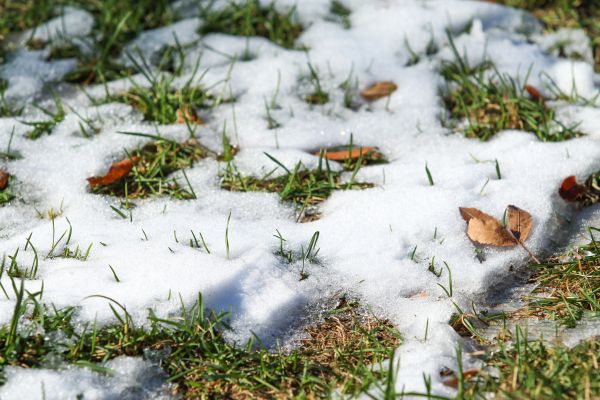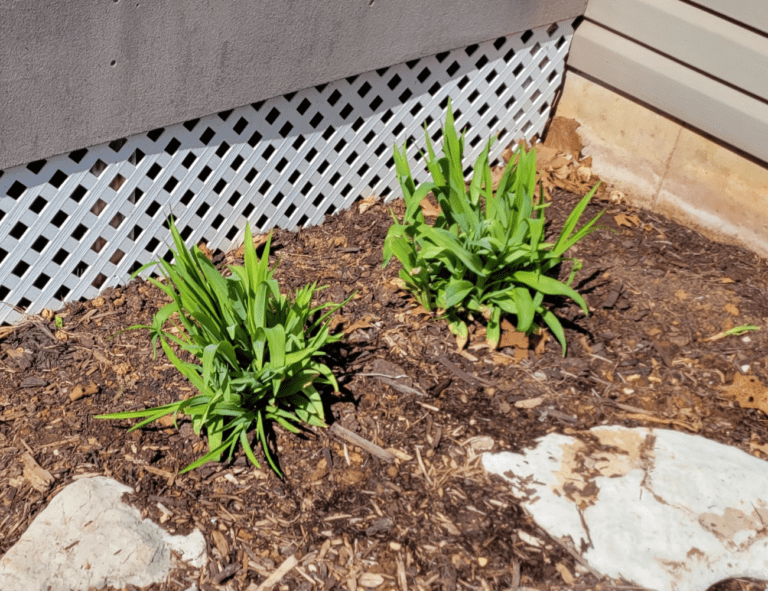Grass Seed in Winter: How and Why to Plant During the Cold Season
You might be wondering, why would anyone plant grass seed in winter? Wouldn’t it make more sense to wait for spring? Surprisingly, planting grass seed in winter, a process often called dormant seeding, can set your lawn up for success when the warmer weather arrives. If you missed the opportunity to sow seed in the fall, winter provides a second chance to prepare your lawn for a lush, green spring. Here’s everything you need to know about planting grass seed in winter, including the benefits, timing, and techniques to make it a success.

Why Plant Grass Seed in Winter?
Planting grass seed in winter might seem counterintuitive, but it’s a proven method to give your lawn a head start. When temperatures drop below the range required for germination, the seeds remain dormant, lying in wait until the soil warms up. This dormant seeding approach allows the seed to settle into the soil and ensures it is ready to sprout as soon as conditions are favorable in early spring.
Dormant seeding can also save time and effort. Unlike spring seeding, which often requires frequent watering, planting grass seed in winter takes advantage of natural snowfall and early spring rain to hydrate the seeds. This eliminates the need for daily watering, making it a more hands-off approach.

Will Grass Seed Germinate in Winter?
The short answer is no—grass seed won’t germinate when the soil is too cold. However, that doesn’t mean it won’t be effective. According to the University of Missouri Division of Plant Sciences, “dormant seeding is the practice of sowing during temperatures not suitable for germination, in the expectation that germination will occur when temperatures rise to suitable levels in the spring.”
Essentially, the seeds stay dormant through the winter, nestled into the soil, and begin to germinate as the soil temperature rises in the spring. This timing ensures that the grass starts growing as soon as conditions are optimal, often outpacing weeds and giving your lawn a competitive edge.

When to Plant Grass Seed in Winter
Timing is everything when it comes to planting grass seed in winter. The goal is to sow the seed after temperatures have dropped consistently below the germination threshold but before snow covers the ground permanently. Ideal times include:
- Early Winter (November to December): This ensures the seeds are in place before the ground freezes solid.
- Late Winter (February): As snow begins to melt and the ground starts to thaw, this is another excellent time to scatter grass seed.
If you can time your seeding just before a snowfall, even better. The snow acts as a protective blanket, insulating the seeds and helping them settle into the soil. When the snow melts, it provides much-needed moisture to kickstart the germination process.

How to Sow Grass Seed in Winter
Planting grass seed in winter is straightforward but requires proper preparation to ensure success. Follow these steps:
- Prepare the Soil: Before sowing, make sure the ground is free of debris like leaves and twigs. If the soil is compacted, consider aerating it in the fall or early winter before temperatures drop too low.
- Choose the Right Seed: Select grass seed appropriate for your region and lawn conditions. Cool-season grasses like Kentucky bluegrass, fescues, and ryegrass typically perform well with dormant seeding.
- Spread the Seed: Use a broadcast spreader or your hands to scatter the seed evenly over the desired area. Aim for even coverage to prevent patchy growth in the spring.
- Take Advantage of Snowfall: If possible, sow your grass seed right before a predicted snowfall. The snow will protect the seed from wind and wildlife while providing moisture as it melts.
- Avoid Disturbance: Once the seed is down, avoid heavy foot traffic or disturbing the area to ensure the seed stays in place.
Related Post: Fall Is the Best Time To Aerate and Seed Your Lawn
Benefits of Reseeding in Winter
If your lawn is thin or patchy, reseeding in winter is an excellent way to prepare for a healthier, more resilient lawn in spring. Here are some key benefits:
- Easier Maintenance: With winter seeding, you can skip the frequent watering required for spring planting, relying instead on natural precipitation.
Better Root Development: Grass seeded in winter has time to establish deep roots before facing the heat and activity of summer. Stronger roots mean a more drought-resistant and durable lawn. - Jumpstart Growth in Spring: By the time spring arrives, the seed is already in place, ready to germinate as soon as the soil warms. This early start gives your lawn a fuller appearance sooner in the season.
- Reduced Competition from Weeds: Dormant seeding allows your grass to sprout before many weed seeds germinate, giving it an advantage.

Common Questions About Planting Grass Seed in Winter
1. Will birds eat the seeds?
While some seed may be lost to wildlife, spreading it just before a snowfall or lightly raking it into the soil can help protect the seed.
2. Can I plant grass seed in winter if I live in a warm climate?
Dormant seeding is most effective in areas with distinct cold seasons. In warmer regions, where the ground doesn’t freeze, winter seeding may not produce the same results.
3. What happens if I seed too early?
If temperatures rise unexpectedly after seeding, the seeds might germinate prematurely, leading to poor establishment. That’s why it’s crucial to wait until the ground is consistently cold.
Final Thoughts: Grass Seed in Winter
Planting grass seed in winter is an excellent strategy to achieve a lush, green lawn come spring. By taking advantage of dormant seeding, you can prepare your lawn for success with minimal effort. Whether you’re reseeding thin areas or starting fresh, the process allows the seed to settle into the soil, ready to sprout at the first sign of spring warmth. With proper timing and technique, grass seed in winter can transform your lawn into a thriving outdoor space for the year ahead.








